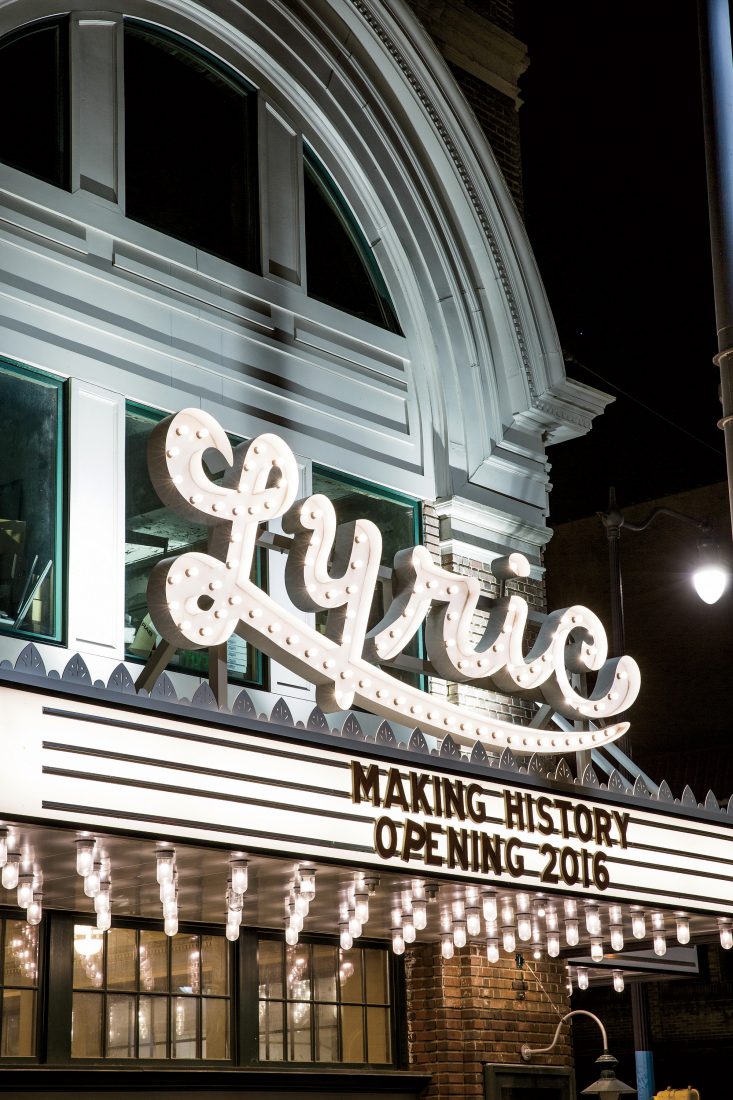“I know that it’s time / for this city of mine,” wails St. Paul and the Broken Bones front man Paul Janeway in the song “Half the City.” This breakout band of Alabama native sons has become the symbol of the new Birmingham, a city fueled by the heart, creativity, and optimistic spirit of its youth. The twenty-something Janeway moves like James Brown, singing the soulful blues of a town on the verge. It’s a city that carries the worldly burden of its not-so-distant past and is pushing harder than a freight train to move ahead. Nowhere is that more evident than downtown, where in recent years that forward progress has been transforming this long-sleepy area of historic high-rises and adjacent industrial neighborhoods hemmed in by interstates.
Even at its most dormant, downtown remained a business hub, full of banks and law offices. Come closing time, though, everyone fled the grid. Its renaissance began in earnest in 2010 with the opening of Railroad Park, a $20 million project that brought nineteen acres of green space to a once-gritty wasteland along the tracks. Around the same time, Good People Brewing Company opened its tasting room catty-corner to the park. Suddenly, downtown was a weekend destination. Now a growing number of restaurants, bars, and music venues have people not only sticking around after work, but also moving into lofts that are going up faster than Alabama or Auburn’s stock after an Iron Bowl win.
The black-white tensions of the past can’t be ignored. But the new generation is doing what its parents and grandparents never did: talking about them. That discussion is led by groups like Leadership Birmingham, which brings together influential residents to improve race relations, quality of life, and economic opportunity. Last August, the Negro Southern League Museum opened adjacent to the new Regions Field, where the minor-league Barons recently welcomed their one millionth visitor. Once relegated to the outskirts at Rickwood Field, this chapter of Birmingham’s sports history—which saw the Black Barons win three Negro American League pennants and produced such all-star players as Willie Mays—is now being told in the heart of the city.

Photo: Caleb Chancey
Center Stage
CENTER STAGE
At the Collins Bar, Feizal Valli serves a bourbon-based cocktail called the Regan Years.
The young people who once fled en masse for the glorious metropolises of Atlanta or New York City more and more are staying put, Gen Xers are returning home, and baby boomers are enthusiastically branching out beyond their suburban stomping grounds. Just try to get a Friday night table at El Barrio, a no-reservations modern Mexican canteen on Second Avenue North, helmed by Highlands Bar and Grill alum Brian Somershield. The wait can exceed an hour, prompting folks to wander down to the bustling Collins Bar or the terrace at Carrigan’s Public House for a drink while they wait. The sidewalks are buzzing.
What’s more, the city wants to succeed. At Innovation Depot, a business incubator, more than seven hundred entrepreneurs are developing start-ups and putting some skin in the game. Groups like REV Birmingham have sprung up to help pave the way. “We’re in the midst of a virtuous cycle that is improving our collective self-esteem,” says Atticus Rominger of REV. “It’s our job to not let anyone take their foot off the gas.” The group has installed LED art displays in train underpasses, making the journey through downtown feel like a trip inside a kaleidoscopic wormhole, and just launched a BikeShare system more advanced than those found in major cities nationwide. It has had a hand in Box Row Avondale, too, a collection of used shipping containers that will soon see new life as the home to some thirty boutiques and restaurants.

Photo: Caleb Chancey
Chris and Idie Hastings at OvenBird.
The hits keep coming. Venue at the Ballpark, a collection of 236 new apartments overlooking Railroad Park, will open this year. The century-old Lyric Theatre is set to reclaim its performance throne this winter, after being shuttered for nearly five decades. Roots and Revelry, the next creation of the folks behind Saw’s Soul Kitchen and Post Office Pies, will anchor the revamped historic 1929 Thomas Jefferson Tower. And the chef Chris Hastings (of the esteemed Hot and Hot Fish Club) looked to the downtown area for his long-awaited second restaurant, OvenBird, which opened late last year. “Downtown and its contiguous neighborhoods—Pepper Place, Avondale, Lakeview—are percolating with energy,” Hastings says. “They’re having a transformational moment.”
As you stroll through the concrete-clad grid, that energy is palpable, and the question locals most frequently ask is “Hey, have you tried that place yet?” As Janeway sings, for Birmingham, it is indeed time.









